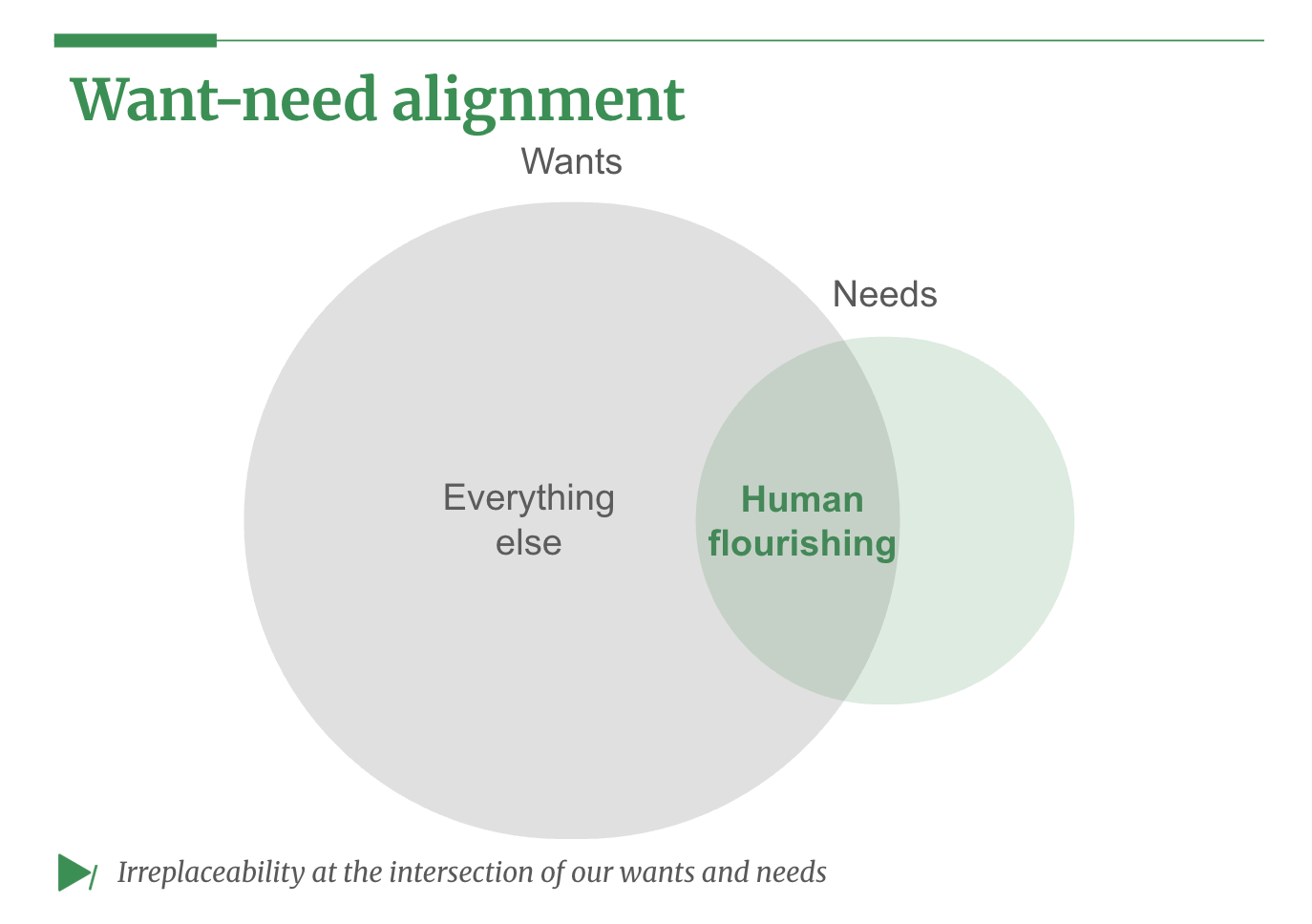I love problems. In startups, we centralize our raison d’être around them.
$ of missed revenue.
% productivity loss.
tons of GHG emissions avoided.
For someone who grew up seeing problems everywhere, venture capital felt beautiful; it is a way to stay close to human struggles and their possible solutions.
But here’s the uncomfortable truth: many startup “problems” are illusions. Manufactured wants mistaken for needs. Five minutes saved and ten more likes are not what we truly need.
A problem is something seen as undesirable. But undesirability is heavily subjective. It depends on the person, the context, the timing. If perception shifts, the problem dissolves.
So if problems themselves are perception-driven, what do we base our solutions on?
We have a problem with problems.
Manufactured problems
Problems imply two things:
We can imagine an alternative world.
We want it.
Instagram and TikTok make this effortless. Our lives could be easier, faster, more beautiful. Every scroll exposes us to “better” alternatives.
That dissatisfaction is the raw fuel of innovation. If you’re happy, you don’t need a new solution. If you’re restless, there’s opportunity.
But not all dissatisfaction is meaningful. Most wants are just love proxies: money, attention, status. If we only solve for wants, we end up with a world full of things we don’t actually need. Add our human adaptability (we normalize, then want more) and we trap ourselves in an infinite problem-solution loop.
Need-want alignment
The real challenge isn’t solving problems. It’s deciding which problems are worth solving.
Needs are what make-or-break survival and human flourishing.
Good health.
Basic income.
Social safety.
Meaningful work.
Livable environment.
Wants are everything else. They feel urgent, but most dissolve when the novelty fades.
When wants and needs overlap, we create meaningful work. Curing preventable disease. Transitioning to clean energy. These are problems that matter. Especially in the AI era, where many functions will be replaceable, what remains truly wanted will be what is irreplaceably needed.
Perception shaping industry
And yet, there’s a deeper layer. If problems are perception-based, then the real lever isn’t solving problems after problems; it’s shaping perception.
Advertising, politics, and now AI nudges don’t just solve problems. They decide which desires count as problems. They tell us which futures are worth wanting.
That means founders and investors are not just problem-solvers. We are perception-shapers.
The kind of businesses we build and fund will determines the kind of wants, problems and solutions we’ll have in the world. We can make ourselves want to work on our needs.
So the real questions are:
What world do we want for ourselves?
What perceptions are worth reinforcing?
Change our perceptions to change others
Too often, we stay on the surface.
We ask “How do we recycle plastic bags?” instead of “How do we stop single-use plastics?”
We ask “How do we reduce energy use?” instead of “How do we switch to clean energy?”
It’s not intelligence that’s lacking. It’s exposure and reflection.
Without lived exposure to different ways of being, we can’t imagine better alternatives. Without exposure to different ways of feelings, we don’t imagine other perceptions.
Without reflection, we don’t ask why the problem exists in the first place (or if it’s a problem to begin with). Without reflection, we can’t see the relationship between perceptions and problems.
Let us ask ourselves:
Are we solving for lives we truly need or just for illusions of lives we momentarily want?
That’s it for this week. If this resonated, share it with those interested in problems. And if you haven’t yet, subscribe to keep exploring deep thoughts.
With Love,
Koshu


